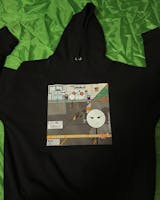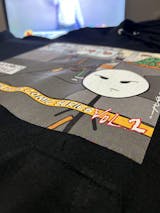Whether DTF transfer is soft or not is also a matter of curiosity. This technique, which turns digital designs into a print in the textile field, is soft. Offering soft and durable prints is one of the reasons why this technique is preferred. It is more advantageous than others because it is a printing technique that provides high resolution in color transitions and details. When applied to textile fabrics, hard prints are not made because it preserves the softness and texture of the fabric. Therefore, users can wear comfortable and soft clothes.
Is DTF or DTG transfer Softer?
Prints applied directly to the garment have a special soft feel. This is because the ink penetrates directly into the fabric. However, while DTF transfer prints do not offer the soft feel of DTG, they do offer exceptional durability. Prints transferred directly to film have excellent wash properties and elasticity. This makes them suitable for heavy use.
How to Soften Transfer Printing?
You can make your transfers a little softer by using a finer ground powder. These powders can be difficult to work with, but quality results can be achieved. It is also recommended to make a second hard print using a textured material as a cover sheet. Pique shirt material can be used. This is because it adds a textural characteristic to the print, providing a softer feel.
It is also important to use quality ink, especially in white. Good quality white ink can be printed in a thin layer and still allow you to achieve a bright, opaque white. Also, the coating on the film can make a big difference. However, the weight of the coating is important, as a heavy coating can feel heavy when transferred to the shirt. On the other hand, a coating that is too light can make it difficult to print the ink properly on the film.
Care should be taken when using hot peel film. Coatings on hot peel may be designed to come off easily. These coatings can give more feel than a good hot/cold peel film.
Causes of Hard Pressures
The film quality of DTF transfer printing is very important. This is because it affects the final texture and feel of the print. If too thick or rigid transfer film is used, a hard and unpleasant print can result. For this reason, softer and higher quality prints can be produced by choosing thin and flexible films. Other factors that can cause hard printing can be explained as follows:
Pressure and heat settings: Printing pressure and heat are most likely to affect the texture. If the degree of pressure and heat is high, it hardens the print. It is therefore necessary to adjust the printing pressure and temperature to bind the ink and toner.
Type of fabric used: The type of fabric used for DTF transfer also has an impact on whether the print is hard or soft. Light textured fabrics such as cotton and polyerster can be printed softer. However, if heavy and stiff fabrics are used, the print can be hard.
Ink or toner: The quality of the ink and toner used in DTF printing also affects the print texture. Some inks and toners produce hard prints, while others produce softer prints. If you want a soft print, you can use inks and toners made for soft printing.
The softness and hardness of the print is an important issue in all printing techniques. Fortunately, DTF printing produces soft and high-quality prints when some points are taken into consideration. Therefore, if you pay attention to the tips in this article, you can get the desired print results.








